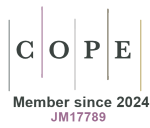Usefulness of dalbavancin in early discharge and non-hospitalization. It’s time to throw your heart over the obstacle?
DOI:
https://doi.org/10.33393/grhta.2024.3071Keywords:
ABSSSI, Antibiotic, Health Technology Assessment (HTA), Long actingAbstract
Introduction: Dalbavancin is a semisynthetic lipoglycopeptide long-acting antibiotic approved for the treatment of acute bacterial skin and skin structure infections (ABSSSIs). Its features can be useful in the current healthcare scenario characterized by the shortage of available hospital beds.
Materials, methods and results: We implemented several actions in order to optimize the use of dalbavancin allowing an improvement strategy both from the healthcare system and the patient’s perspective in two hospital settings. In the Emergency Department we hospitalized only patients who met the clinical criteria and not the logistic criteria (i.e., the need for antibiotic therapy infusion). During the years 2017-2023, this strategy was applied in 40 cases, thus avoiding 40 hospitalizations for a total saving of 280 days of hospitalization.
In the Internal Medicine ward and surgery department when there was no longer any need for hospitalization, we discharged the patient as early as possible. During the years 2017-2023, this strategy was applied in 189 cases, saving at least 1,134 days of hospitalization. The outcome of the treated patients was favorable in 228 out of 229 patients (99.5%).
Conclusions: Our experience using dalbavancin in ABSSSI has been very satisfactory overall. The efficacy was close to 100%. Minor adverse events of slight severity occurred rarely. At the same time, this strategy allowed a more efficient allocation of hospital beds. Dalbavancin presents an ideal pharmacodynamic/pharmacokinetic profile for the management of ABSSSI especially in settings where shortage of hospital beds is critical.
References
- Boucher HW, Wilcox M, Talbot GH, Puttagunta S, Das AF, Dunne MW. Once-weekly dalbavancin versus daily conventional therapy for skin infection. N Engl J Med. 2014;370(23):2169-2179. https://doi.org/10.1056/NEJMoa1310480 PMID:24897082 DOI: https://doi.org/10.1056/NEJMoa1310480
- Barberán J, de la Cuerda A, Barberán LC. Dalbavancin. Rev Esp Quimioter. 2021Sep;34 (Suppl 1):26-28. https://doi.org/10.37201/req/s01.07.2021 PMID: 34598419 DOI: https://doi.org/10.37201/req/s01.07.2021
- Molina KC, Miller MA, Mueller SW, Van Matre ET, Krsak M, Kiser TH. Clinical pharmacokinetics and pharmacodynamics of dalbavancin. Clin Pharmacokinet. 2022;61(3):363-374. https://doi.org/10.1007/s40262-021-01088-w PMID:34931283 DOI: https://doi.org/10.1007/s40262-021-01088-w
- Rappo U, Puttagunta S, Shevchenko V, et al. Dalbavancin for the treatment of osteomyelitis in adult patients: a randomized clinical trial of efficacy and safety. Open Forum Infect Dis. 2019;6(1):ofy331. https://doi.org/10.1093/ofid/ofy331 PMID: 30648126 DOI: https://doi.org/10.1093/ofid/ofy331
- Lovatti S, Tiecco G, Mulé A, et al. Dalbavancin in bone and joint infections: a systematic review. Pharmaceuticals (Basel). 2023;16(7):1005. https://doi.org/10.3390/ph16071005 PMID:37513919 DOI: https://doi.org/10.3390/ph16071005
- Ramadan MS, Gallo R, Lugarà M, et al. Dalbavancin treatment for spondylodiscitis: multi-center clinical experience and literature review. J Chemother. 2022;34(6):360-366. https://doi.org/10.1080/1120009X.2021.2015649 PMID:34923922 DOI: https://doi.org/10.1080/1120009X.2021.2015649
- Fazili T, Bansal E, Garner D, Gomez M, Stornelli N. Dalbavancin as sequential therapy for infective endocarditis due to Gram-positive organisms: a review. Int J Antimicrob Agents. 2023;61(4):106749. https://doi.org/10.1016/j.ijantimicag.2023.106749 PMID:36758775 DOI: https://doi.org/10.1016/j.ijantimicag.2023.106749
- Venturini S, Reffo I, Avolio M, et al. Dalbavancin in catheter-related bloodstream infections: a pilot study. Infez Med. 2023;31(2):250-256. https://doi.org/10.53854/liim-3102-14. DOI: https://doi.org/10.53854/liim-3102-14
- Thabit AK, Fatani DF, Bamakhrama MS, Barnawi OA, Basudan LO, Alhejaili SF. Antibiotic penetration into bone and joints: an updated review. Int J Infect Dis. 2019;81:128-136. https://doi.org/10.1016/j.ijid.2019.02.005 PMID:30772469 DOI: https://doi.org/10.1016/j.ijid.2019.02.005
- Žiemytė M, Rodríguez-Díaz JC, Ventero MP, Mira A, Ferrer MD. Effect of dalbavancin on staphylococcal biofilms when administered alone or in combination with biofilm-detaching compounds. Front Microbiol. 2020;11:553. https://doi.org/10.3389/fmicb.2020.00553 PMID:32362877 DOI: https://doi.org/10.3389/fmicb.2020.00553
- Oliva A, Stefani S, Venditti M, et al. Biofilm-related infections in gram-positive bacteria and the potential role of the long-acting agent dalbavancin. Front Microbiol. 2021;12:749685. https://doi.org/10.3389/fmicb.2021.749685 PMID: 34745053 DOI: https://doi.org/10.3389/fmicb.2021.749685
- Favaretti C, Kheiraoui F, di Pietro ML, et al. Valutazione dell'impatto clinico, organizzativo, economico ed etico dell'introduzione di una nuova tecnologia sanitaria, Dalbavancina, per il trattamento delle infezioni batteriche acute di cute e struttura cutanea in Italia. Int J Public Health. 2016;5(4). https://www.ijph.it/hta-dalbavancina. Accessed April 2024.
- Agarwal R, Bartsch SM, Kelly BJ, et al. Newer glycopeptide antibiotics for treatment of complicated skin and soft tissue infections: systematic review, network meta-analysis and cost analysis. Clin Microbiol Infect. 2018;24(4):361-368. https://doi.org/10.1016/j.cmi.2017.08.028 PMID:28882727 DOI: https://doi.org/10.1016/j.cmi.2017.08.028
- Marcellusi A, Viti R, Sciattella P, et al. Economic evaluation of the treatment of Acute Bacterial Skin and Skin Structure Infections (ABSSSIs) from the national payer perspective: introduction of a new treatment to the patient journey. A simulation of three European countries. Expert Rev Pharmacoecon Outcomes Res. 2019;19(5):581-599. https://doi.org/10.1080/14737167.2019.1569516 PMID:30714834 DOI: https://doi.org/10.1080/14737167.2019.1569516
- Ektare V, Khachatryan A, Xue M, Dunne M, Johnson K, Stephens J. Assessing the economic value of avoiding hospital admissions by shifting the management of gram+ acute bacterial skin and skin-structure infections to an outpatient care setting. J Med Econ. 2015;18(12):1092-1101. https://doi.org/10.3111/13696998.2015.1078339 PMID:26368787 DOI: https://doi.org/10.3111/13696998.2015.1078339
- Rieck KM, Pagali S, Miller DM. Delirium in hospitalized older adults. Hosp Pract (1995). 2020 Mar;48(suppl 1):3-16. https://doi.org/10.1080/21548331.2019.1709359 PMID: 31874064 DOI: https://doi.org/10.1080/21548331.2019.1709359
- Mei X, Liu YH, Han YQ, Zheng CY. Risk factors, preventive interventions, overlapping symptoms, and clinical measures of delirium in elderly patients. World J Psychiatry. 2023;13(12):973-984. https://doi.org/10.5498/wjp.v13.i12.973 PMID:38186721 DOI: https://doi.org/10.5498/wjp.v13.i12.973
- McCarthy MW, Keyloun KR, Gillard P, et al. Dalbavancin reduces hospital stay and improves productivity for patients with acute bacterial skin and skin structure infections: the ENHANCE trial. Infect Dis Ther. 2020;9(1):53-67. https://doi.org/10.1007/s40121-019-00275-4 PMID:31713130 DOI: https://doi.org/10.1007/s40121-019-00275-4
- Oliva A, Carbonara S, Cianci V, et al. Direct or early discharge of acute bacterial skin and skin structure infection patients from the emergency department/unit: place in therapy of dalbavancin. Expert Rev Anti Infect Ther. 2023;21(7):703-721. https://doi.org/10.1080/14787210.2023.2214727 PMID:37227028 DOI: https://doi.org/10.1080/14787210.2023.2214727










